|
THE GREAT DEPRESSION in RINGGOLD COUNTY
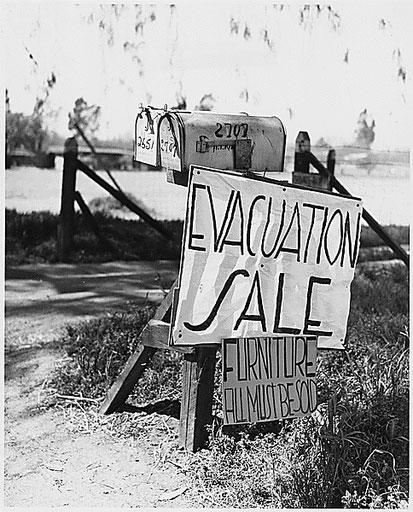
Although most people believe that the 1929 stock market crash brought on the Great Depression, many factors were at work, bringing
on perhaps one of the most devastating chapters of American history. Like the Civil War seventy years prior, almost every single family
felt the effects of the Great Depression with many struggling for years to regain their footing. Today, the root origins of the
Great Depression are not clear, no more than they were in the late 1920's and early 1930's. Many scholars and historians believe that
it was a chain of events, each one compounding the impact of the one before, until the entire economic, social, and political foundations
collapsed. After the close of World War I, America experienced an economic boom of what was considered to be "easy" money until Great Britian
decided to go back to the pre-World War I gold standard in 1926. This action created a severe recession in Great Britian. Fearing a bank collapse,
the U.S. Federal Reserve System put into place restrictive monetary policies which led to a decreased in the money supply, creating a state of deflation which
raised interest rates to extraordinary levels. Consequently, investment purchases declined by 90% and business began selling less than what they had been producing.
In an attempt to stablize themselves, production was cut back, leading to laying off the labor force and a marked decline in the employment rate. With unemployment
rapidly on the rise, a reduction in family incomes resulted in a reduction in consumer purchases. With a reduction in consumer
purchasing, business were forced to lay off more employees, thus a cycle was created, one of which there seemed to be no way to break it. By 1933, the national unemployment
rate was at 24% as compared to 3.2% of 1929. Then on Black Thursday, October 24, 1929, the initial crash occurred on Wall Street. It was followed by Black Monday on October
28th and Black Tuesday on October 29th. The collapse continued for a month. The Great Depression had begun. During this time, it became apparent that the once fertile and
rich soil of Ringgold County had slowly been eroded away. Years of overgrazing and heavy crop production had taken its toll on the top soil which had been washed away
by heavy rainfall and periodic flooding. With the land cleared of native timberland, yawning gullies appeared thoughout the county. By 1946, the farmers of Ringgold County
led all the other counties in the participation of the Federal Soil Conservation program, with a 96% enrollment. This, however did not soften the blow felt from the droughts
of 1933 and 1934, the worst experienced in Ringgold County. The Spring of 1934 passed with no rainfall whatsoever. The days of May, June, and July passed with no clouds in
sight and temperatures ranging from 105 to 111-degrees. On July 1st, the crops began to burn up in the fields. The rain did come, but on August 30th, much too late to save
the crops and pastureland. With nothing to feed their livestock, many farmers were forced to sell off the animals. Some even gave their livestock away. Many farmers turned to
the Farm Bureau office in Mount Ayr for assistance in obtaining some sort of feed stuff during the winters of 1934 and 1935. In the years of 1937 and 1938, Russell Lee came
to Ringgold County where he produced a series of photographs depicting rural life during the Great Depression. Below are some of his photographs.

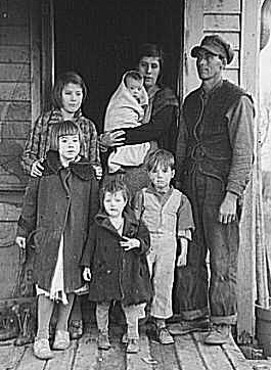
At Left: Alfred ATKINSON and his eldest sons, near Shannon City, Ringgold County, Iowa.
At Right: The Alfred ATKINSON Family.
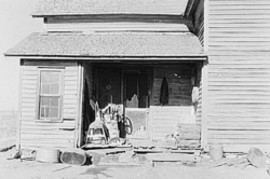
 At Left: Farmhouse of J. H. and Ellis CLINE, Ringgold County, Iowa.
At Right: Daughters of John SCOTT, Ringgold County, Iowa.
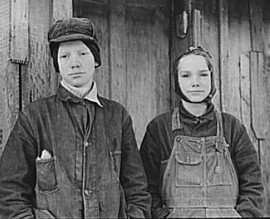 Children of John Scott, Elmer on left, Ringgold County, Iowa.
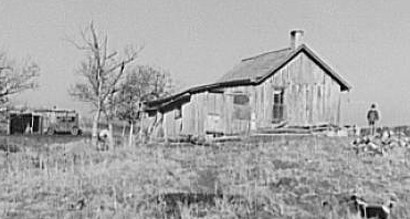 Farm house of John Scott, Ringgold County, Iowa.
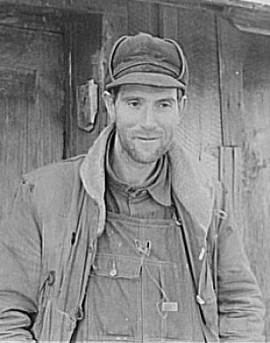 
At Left: John Scott, Ringgold County, Iowa.
At Right: Mrs. John SCOTT and son, Ringgold County, Iowa.
A hired farm hand by trade, Jim SCOTT had been able to find work outside of periodic employment with the WPA projects and what he raised on his rented 80-acre farm.
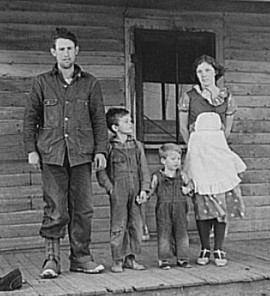
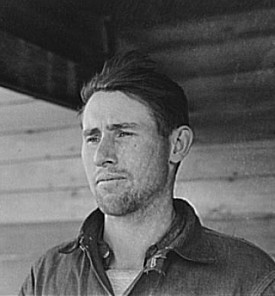
At Left: Gernie MARSHALL and family, Ringgold County, Iowa. At Right: Gernie MARSHALL, Ringgold County, Iowa.
A tenant farmer who has had no crops for three years due to drought, Gernie MARSHALL was considering moving his family to California.
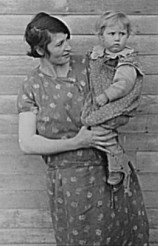

At Left: Mrs. Ed BOLTINGER and child, Ringgold County, Iowa.
At Right: Abandoned farmhouse of Charles BARNHARD, Ringgold County, Iowa.

Sources:
Ringgold County History Complied and written by the Iowa Writers' Program of the Work Projects Administration in the State of Iowa, Sponsored
by Ringgold County Superintendent of Schools, Mount Ayr, Iowa. 1942.
applet-magic.com/dep1929.htm
LEE, Russell, photographer. "America from the Great Depression to World WarII" Library of Congress, images "fsa 8a21757" "fsa 8a121577" "fsa 8b30061"
"fsa 8a21650" "fsa 8a21655" "fsa 8a21653" "fsa 8a21645" "fsa 8a21647" "fsa 8a21636" "fsa 8b30064"
Written &Submitted by Sharon R. Becker, 2007 

|